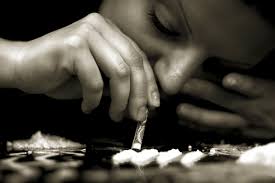How Long Do Drugs Stay in Your System?
It occurs in the workplace or on the roadside. Recently, there was talk of using it to screen welfare recipients. No matter the reason for it, there might come a time when you will be tested for drugs.
Here is what you need to know before you undergo a drug test.
The results of drug testing depend upon several factors, the type of testing performed, the kind of drug used, and the timing of the test. Drugs (or their remnants after the body metabolises them) remain in different parts of the body for different periods. A blood test done four hours after a drug is taken may come back positive, while a hair follicle test may result in a negative finding. Performing the same tests one week later may reveal the exact opposite for both results.
Factors Affecting Drug Levels in the Human Body
As with most functions of the human body, individuals metabolize drugs differently. Many drugs affect people in different ways. Other factors that influence the time it takes an individual to excrete a drug include body mass, how well hydrated a person is, and how much and how often they use the drug.
Additionally, the potency of the drug used affects how long it remains in the system.
When the body metabolizes a substance, it processes it, enzymatically converting one chemical compound into another. Metabolism is how the body rids itself of a substance such as an illegal drug. However, even if the drug itself is gone from the body, traces of the by-products of the metabolism of the drug may remain.
Methods of Testing for Drugs
Beyond variations in body metabolism, how long a drug “stays” in the body depends upon the body part tested. Different testing methods reveal the presence of drugs at different times following the ingestion of the substance.
Urine Tests
Urine tests account for the vast majority of drug testing in Australia, and are more reliable when used with regular or chronic drug users. Urine testing measures what is left over in the urine after the drug is metabolised through the liver. Urine tests detect the presence of drugs in the body for a more extended period than saliva tests, although the window of opportunity with urine tests for detecting most drugs is only up to 48 hours.
There are exceptions, such as diazepam and cannabis, which may remain detectable in urine for days or even weeks after use. Other substances, such as alcohol and gamma-hydroxybutyrate, are quickly eliminated by the body.
Saliva Tests
Several Australia
n states and territories use saliva testing in roadside sobriety checks to check for illicit drugs, including cannabis and methamphetamine. A saliva test reveals when the active ingredient of a drug is present, and indicates recent use of the substance. For instance, detecting cannabis through a saliva test after 12 hours is unusual, and even heavily imbibed amounts are undetectable 24 to 36 hours after use. Methamphetamines will show up in saliva testing for up to 36 hours.
Under the Australian oral drug testing standards, a saliva drug test with a reading of 25 or more nanograms per milligram of THC (the active ingredient in cannabis) or 50 nanograms per milligram for methamphetamine is a positive result (Source: News.com).
Blood Tests
A blood toxicology screen or test indicates the presence of a drug in the blood. A positive result indicates the presence of a drug or several drugs in the body, but not the amount in the bloodstream. However, there are other tests that show the amount of a substance in the blood. Recent evidence indicates that saliva tests may be as effective as blood tests for indicating the presence of drugs in the system.
Hair Follicle Tests
Hair is more than just a bunch of dead cells. The presence of drugs in hair is based on a simple principle. Developing hair follicles receive nourishment from the blood. Drugs or drug metabolites appear in the blood, and when the blood reaches the follicles, a small amount of the drug or metabolite is deposited within the core of the hair shaft. Testing a length of hair may provide a record of past drug use because the evidence is still entrapped in the hair shaft. In most cases, it takes five days for drugs to show up in human hair, and drugs may be detected this way for several months.
Drug Residue in the Body: The Numbers
Drugs may remain present in the body for 90 days or more.
SUBSTANCE Urine Testing Blood Testing Hair Testing
Alcohol 3-5 days 10-12 hours Up to 90 days
Cannabis 7-30 days 14 days Up to 90 days
Amphetamines 1-3 days 12 hours Up to 90 days
Methamphetamines 3-6 days 24-36 hours Up to 90 days
Cocaine 3-4 days 1-2 days Up to 90 days
Heroin 3-4 days 12 hours Up to 90 days
LSD 1-3 days 2-3 hours Up to 3 days
MDMA 3-4 days 1-2 days Up to 90 days
Critics argue that urine and saliva tests show past drug use like when you have a bender on the weekend. But they do not inform whether a person is ‘fir for work’ or too impaired to drive. The other concern is these tests detect alcohol and illicit drug. But they do not test for prescription drugs such as benzodiazepines, which can greatly impair a person’s driving ability.
Forensic toxicologist Andrew Leibie also warns there are new drugs on the market like flakka or synthetic cannabis and no one knows how long these drugs stay in a person’s system.
How to get a clean drug test result
The surest way of obtaining a negative result in any drug testing is to not use drugs. The length a drug stays in the body varies from person to person, as well as from drug to drug. The figures on detectability are not absolutes, only average values, and should not be used to achieve a clean drug test.







